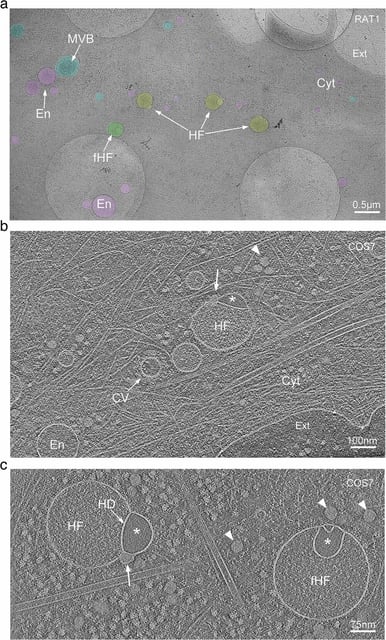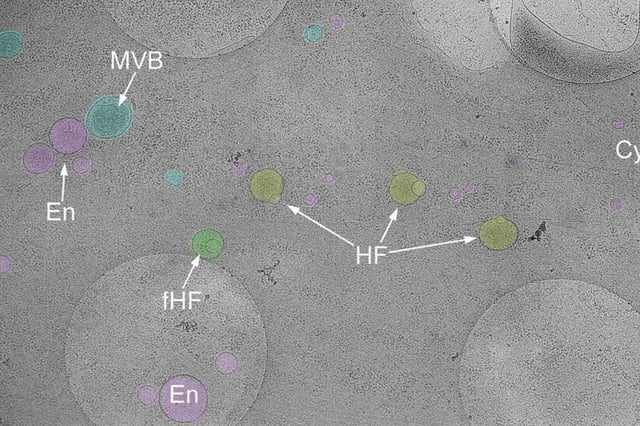Overview
- Researchers at the University of Virginia School of Medicine and the NIH used cryo-electron tomography to reveal the hemifusome as a transient hub for vesicle docking and molecular cargo exchange.
- Hemifusomes assemble and disassemble in response to cellular demands, acting as a dynamic sorting station unlike any previously known organelle.
- Defects in hemifusome function may contribute to genetic trafficking disorders such as Hermansky-Pudlak syndrome and have implications for conditions like cystic fibrosis and Down syndrome.
- The discovery was documented June 25 in Nature Communications, featuring high-resolution, near-native images of the organelle’s structure and interactions.
- Ongoing studies are probing how hemifusomes operate in healthy versus diseased cells to uncover therapeutic targets for diseases rooted in cellular transport failures.


